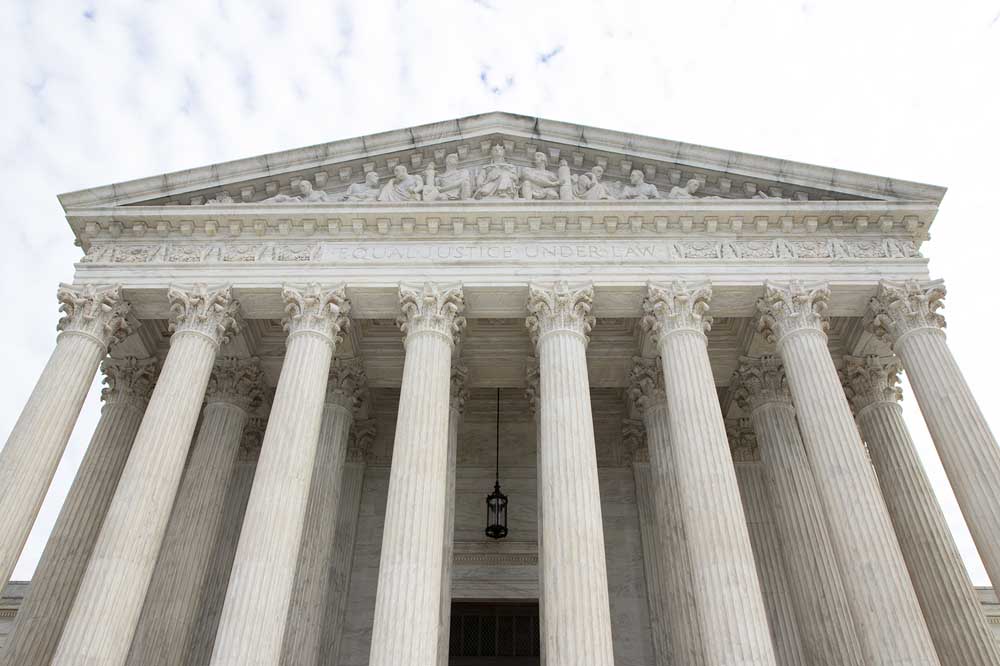On heels of Chevron decision, Supreme Court vacates rulings
Published 8:45 am Wednesday, July 3, 2024

- U.S. Supreme Court.
Days after nullifying the Chevron deference, the U.S. Supreme Court vacated judgments in nine cases Tuesday and instructed lower courts to reconsider their decisions.
The cases include the appeal of a South Dakota farmer in a dispute with the USDA’s Natural Resources Conservation Service over whether a pond made by snow melting into a field qualifies as wetlands.
Pacific Legal Foundation attorney Luke Wake said he expects more cases to be remanded in light of the court striking down a doctrine that instructed judges to defer to federal agencies in close calls.
“The practical reality is getting rid of Chevron is a major game-changer,” he said. “Before it was, ‘tie goes to the runner,’ and the government was always the runner.”
The court’s 6-3 decision, issued June 28, overturned a 40-year-old doctrine that influenced some 18,000 federal court decisions, according to research cited by Justice Elena Kagen in the dissenting opinion.
Kagen, joined by the court’s two other liberal justices, Sonia Sotomayer and Ketani Brown Jackson, said overturning the Chevron doctrine would handicap the modern administrative state.
The court’s conservative majority ruled Chevron yielded too much power to the executive branch and prevented judges from judging.
Conservative justices had signaled skepticism about the doctrine. The high court hasn’t cited Chevron in a ruling since 2016. Chevron, however, continued to influence decisions in District Courts, Wake said.
“There was this weird dynamic. It was ‘Chevron, Chevron, Chevron’ at the District Court, but at the Appeals Court it was the doctrine that can’t be named,” he said. “I think for quite awhile the (Justice Department) realized the writing was on the wall.”
The Chevron doctrine was purportedly invoked after a through judicial review found a law ambiguous. With Chevron dead, more attention may be paid to how much authority Congress delegates to the executive branch, Wake said. “I think that’s the next big fight,” he said.
The case that overturned Chevron, Loper Bright Enterprises v. Raimondo, stemmed from a dispute involving Atlantic herring fishing boats. The ruling will now be applied to other disputes, such as Arlen Foster’s case.
In heavy snow years, a pond, less than an acre and 8 inches deep, forms on his South Dakota farm and doesn’t dry out in time for spring planting. If Foster drains the pond, he loses federal agricultural benefits.
He can’t farm all his land, but he can’t afford to lose the benefits, according to court records. The Pacific Legal Foundation, which represents Foster, argues NRCS’ regulations conflict with the “Swampbuster” law.
Congress passed the law in 1985 to encourage farmers to preserve wetlands. The 8th Circuit Court of Appeals deferred to the agency’s interpretation of Swampbuster.
The Supreme Court remanded to the D.C. Court of Appeals a dispute between the Federal Energy Regulatory Commission and Edison Electric Institute, which represents investor-owned electric companies.
FERC ruled a 160-megawatt wind project in Montana will qualify for preferential treatment reserved for small renewable energy projects. The developer will limit the project’s maximum output to only 80 megawatts.
Because of a 1978 law, utilities must buy electricity from small renewable energy projects. Edison argues FERC misinterpreted the law, forcing utilities to buy electricity from large companies at above-market rates.
PacifiCorp, which has customers in Oregon, Washington, Idaho and California, submitted a friend-of-the-court brief stated FERC’s interpretation will hurt ratepayers.






